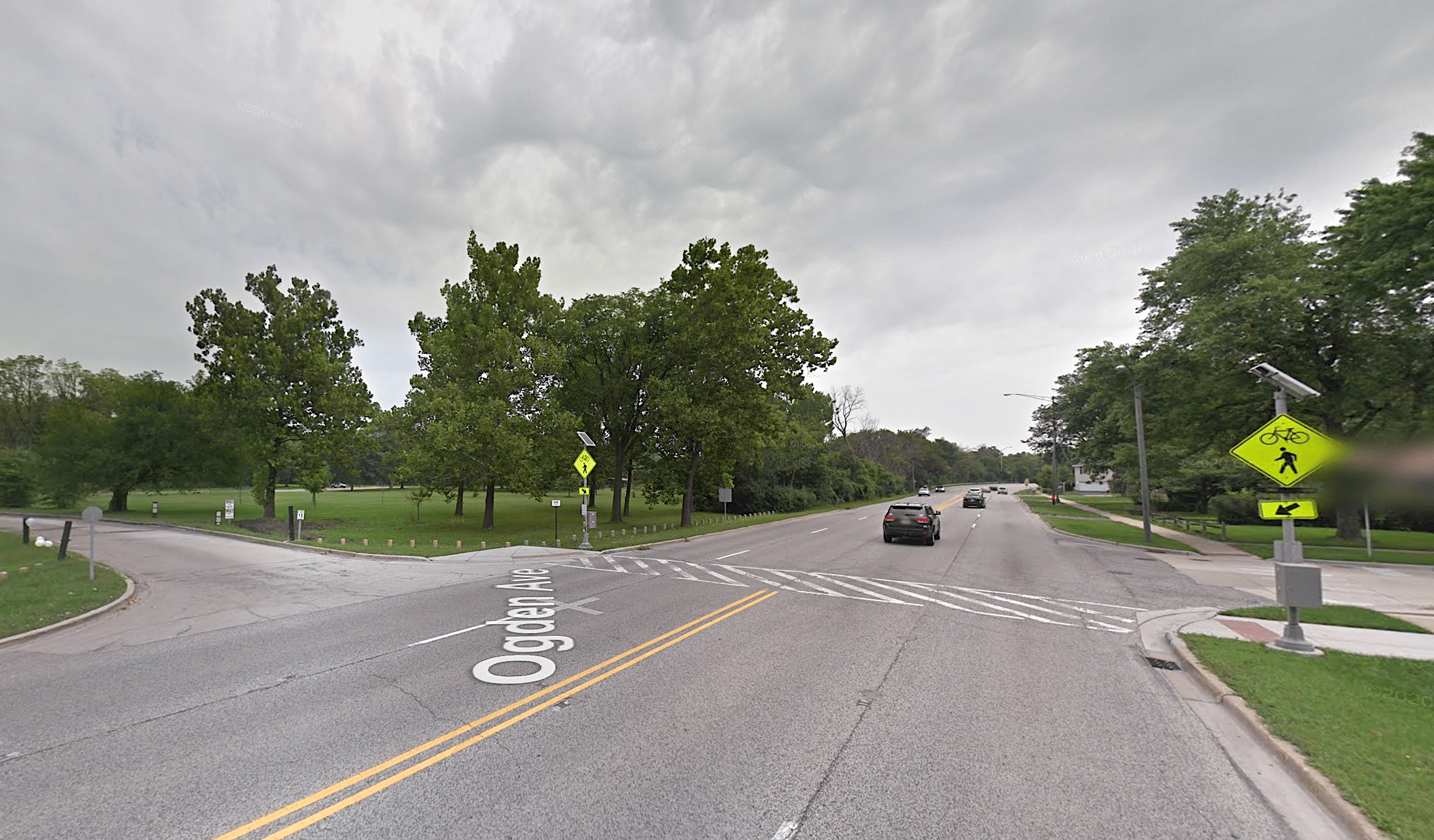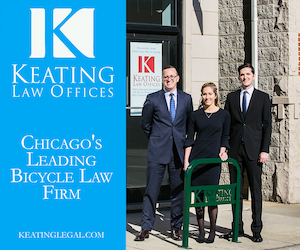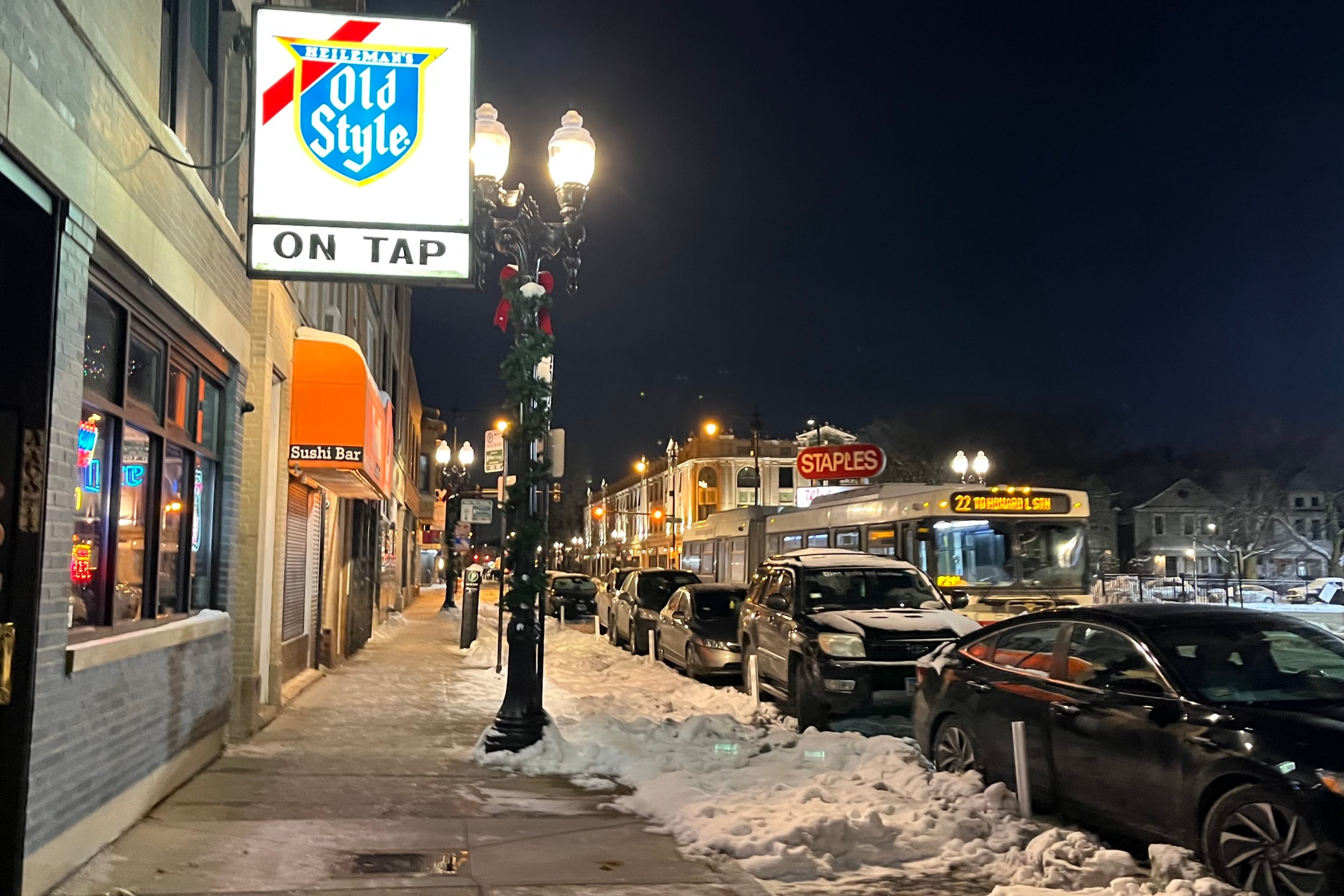Update 2/25/25, 9:45 AM: Here's the final City Clerk tally of who voted for/against a 25 mph speed limit. I've updated our map accordingly. Previously unknown:
Ald. Pat Dowell (3rd): 👎 (opposed)
Ald. Lamont Robinson (4th) 👍 (in favor)
Ald. Desmon Yancy (5th) 👎
Ald. Brendan Reilly (42nd) ❓ (didn't vote)
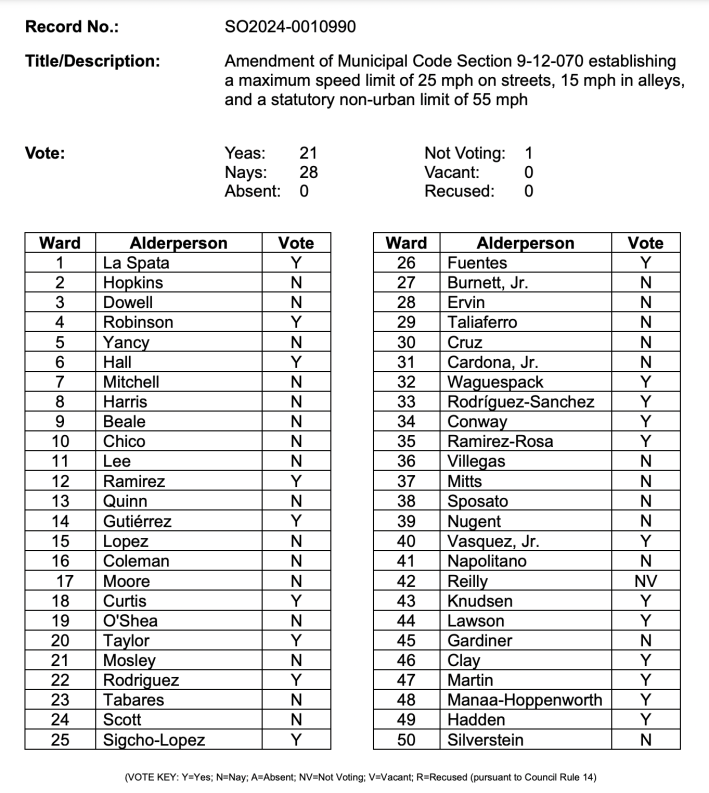
Update 2/22/25, 7:30 AM: Jeremy Glover, a safe streets advocate and skilled cartographer, had a similar perspective on the vote as I did, "This vote was more ideological than it was based on physical ward characteristics." But I think he did a better job of framing that point than I did, with an elegant map and chart illustrating that alderpersons of wards with a high number of traffic injuries per square mile were more likely to vote against the lower speed limit. Check out his map and chart in detail on Twitter and Bluesky.
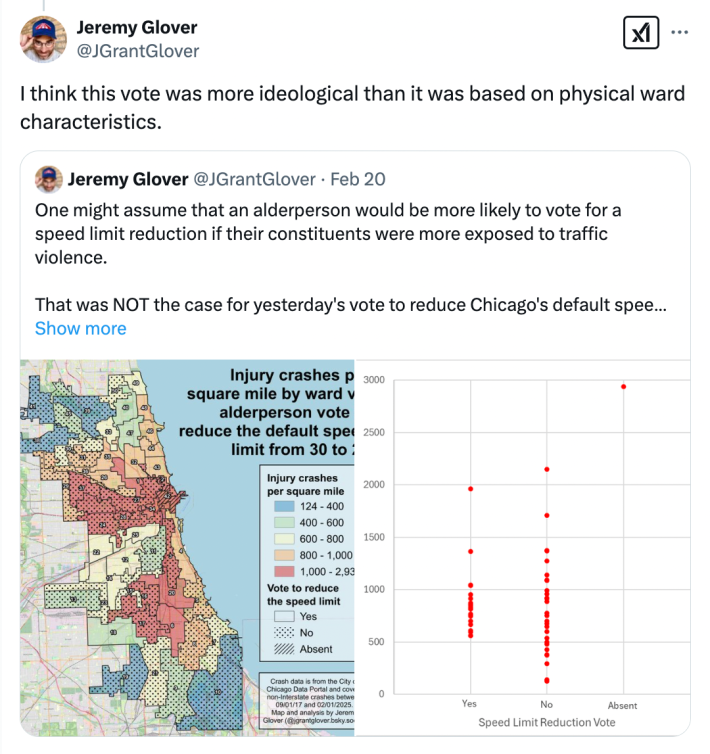
Update 2/21/25, 1:30 PM: After I publicized this article today, Ald. Andre Vasquez (40th), one of the ordinance's most vocal proponents, and generally an important advocate for safer streets, made it clear he wasn't happy with the angle I took.
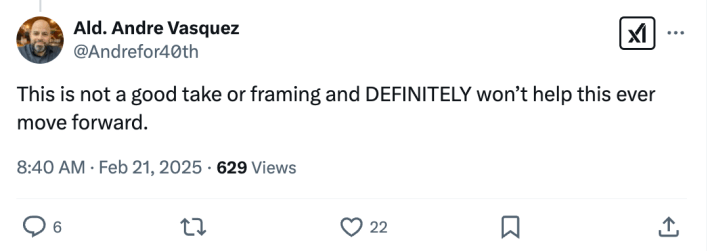
I respect his opinion on this matter, so I've contacted his office and asked to schedule an interview on what he feels would be the most helpful framing, as he said, "to move sensible safety legislation forward." Hopefully he'll be up for that because, from Streetsblog's perspective, the most important thing is to help get this crucial legislation passed.
Tuesday's Chicago City Council vote against lowering the default speed limit from 30 to 25 mph was disheartening for those trying to reduce the number serious and fatal traffic crashes in our city. You can get partly up to speed on this issue by checking out yesterday's Streetsblog post.
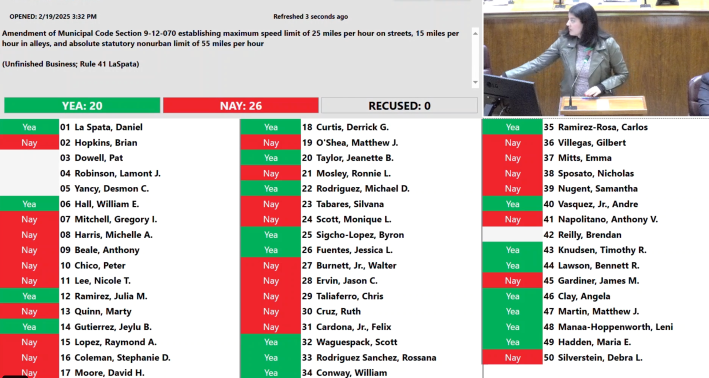
In a nutshell, peer cities like New York, Boston, and Seattle have had 25 or lower speed limits for years, and have benefitted from safer speeds and fewer traffic injuries and deaths, generally without additional enforcement or infrastructure. But the proposed Chicago ordinance, sponsored by Ald. Daniel La Spata (1st), was defeated by a vote of 28 to 21, with opponents citing concerns about racial and economic equity. They largely disregarded the fact that people of color and low-income residents are disproportionately impacted by traffic violence in our city.
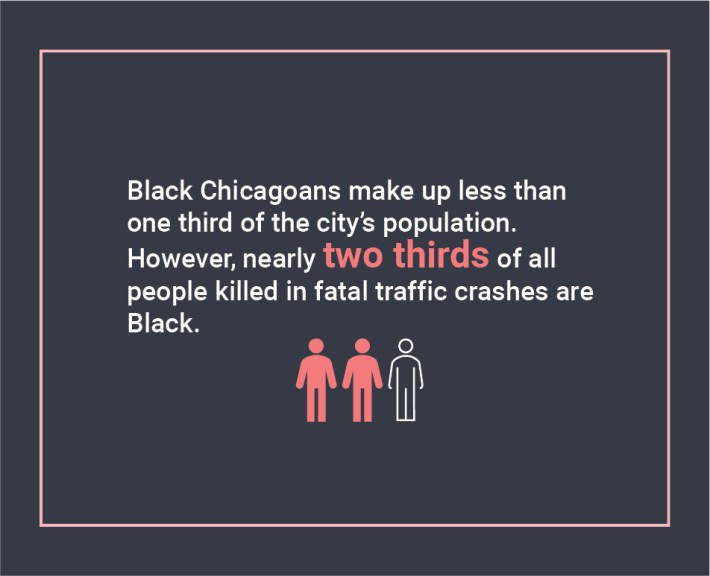
There was one silver lining of Wednesday's disappointing outcome. Several local news reports included info that indicates the alders who voted against the change should have focused less on protecting drivers from fines, and more on protecting people from crashes. Here are a few examples.
"La Spata has estimated the lower speed limit could save the lives of more than 300 Chicagoans over the next decade," wrote the Sun-Times Fran Spielman. "He has argued that fears that the lower speed limit will trigger an avalanche of tickets and traffic stops are unfounded."
"Proponents of reducing the speed limit pointed to city data that shows a person struck by a vehicle traveling at 20 mph has only a 5 percent chance of dying — while that number grows to 40 percent at 30 mph," noted Block Club's Madison Savedra and Mack Liederman.
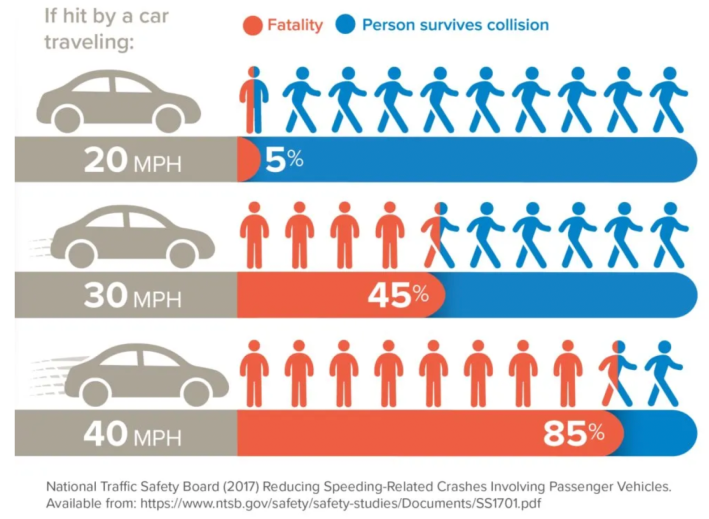
"New York City and Boston recorded fewer deaths as a result of traffic crashes involving speeding and pedestrians after lowering their default speed limits, records show," pointed out WTTW's Heather Cherone.
"Ordinance sponsor Ald. Daniel La Spata noted, 'we have never in the past decade had fewer than 100 traffic fatalities in any given year,'" reported Axios' Monica Eng. "He highlighted the case of 3-year-old Elizabeth Grace Shambrook, who was crushed under a semi in 2022."
The girl's father Tim Shambrook, who called ward offices prior to the vote to ask alders to support the ordinance, said he appreciates that the news reports highlighted some the Council's failure to lead on the traffic violence issue.

The breakdown of who voted for and against the speed limit change shows some interesting trends. I've put together the following map to highlight which voting blocs were generally in favor of or opposed to the legislation.
Here's a quick explanation of what the icons represent, and what significance they might have regarding yesterday's vote.
Green thumbs-up: These show wards where the alderperson voted in favor of lowering the speed limit. Representatives of lmost the entire northeast quadrant of the city, where many safe streets advocates live, supported the ordinance. There were also several "yea" votes on the West and Southwest sides, and a few more in various parts of the South Side.
Purple thumbs-down: These show districts whose alders voted against the legislation.
Black Caucus members (Pan-African flag icons): The Caucus includes all African-American Council members, mostly representing the South and West sides, where the majority of Chicago traffic fatalities take place.
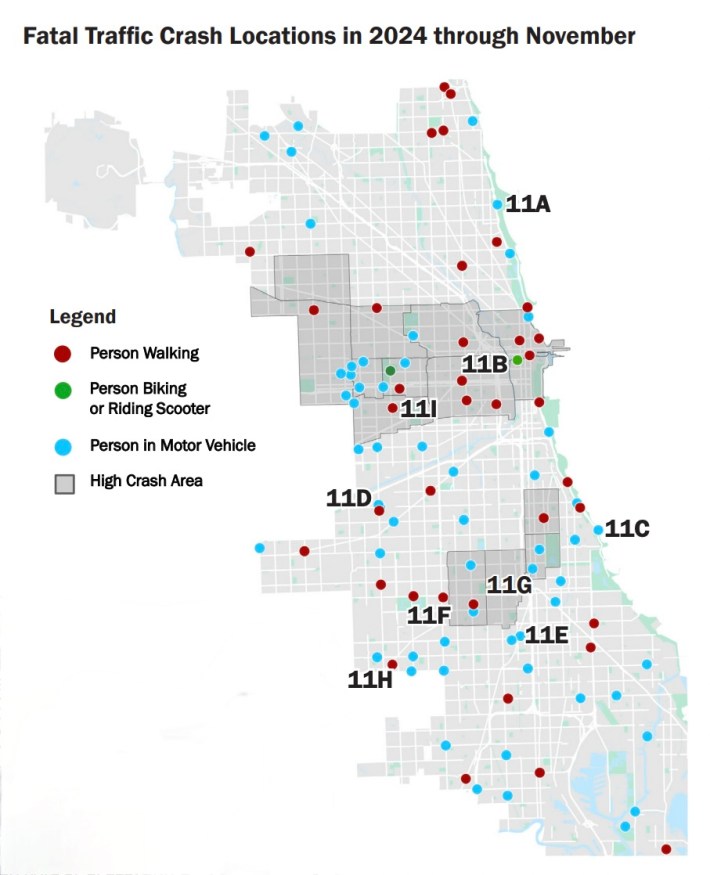
While several Black Caucus members voted for the ordinance, most opposed it, with a few representatives inaccurately stating at Tuesday's meeting that speed cameras are concentrated in communities of color on the South and West sides. Some argued that lowering the speed limit would result in more fines and pretextual police stops. Those are valid concerns. However, Ald. La Spata reported that there was no increase in ticketing or policing after cities like New York and Boston adopted 25 mph speed limits, but there was a dramatic decrease in speeding and crashes.
Community Areas where Trump won precincts (MAGA hat icons): Aside from Black Caucus members, many of the no votes came from alders whose wards include, or are very near, Community Areas containing some voting precincts where Donald Trump won a majority of the 2024 vote. Most of these areas are on the Far Northwest and Far Southwest sides.
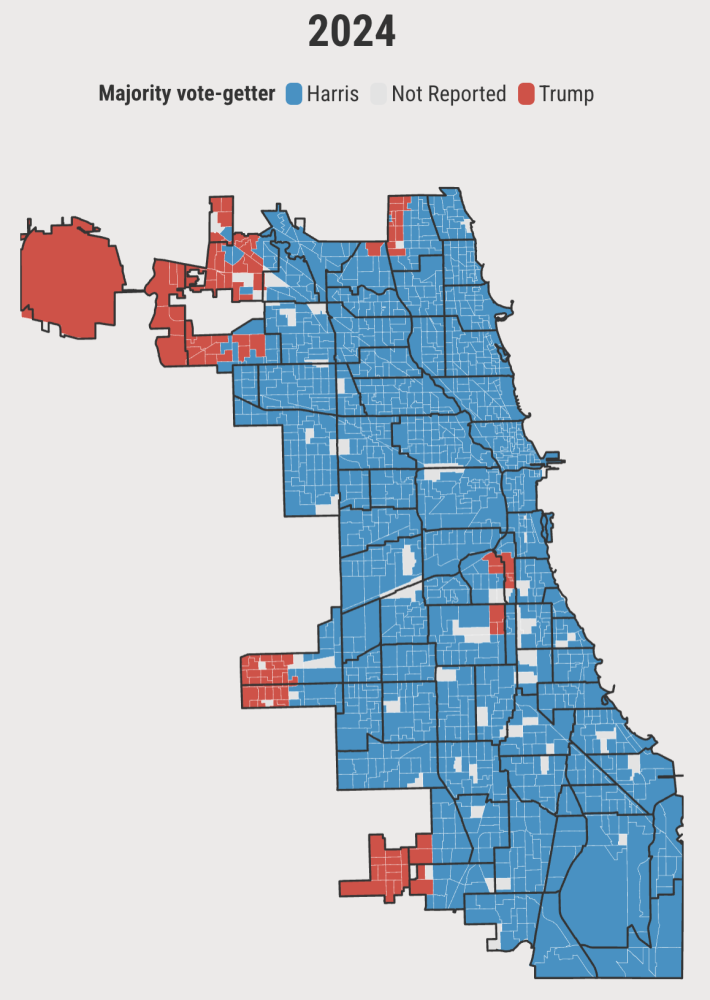
As I've discussed before, the conservative, car-centric attitudes of some constituents seem to be a factor in why there are few or no bikeways in those parts of town. It also likely influenced some alders' decisions to oppose safer speeds. (Obviously, just because a ward includes precincts that voted for Trump, that doesn't mean the alder themself is a Trump supporter.)
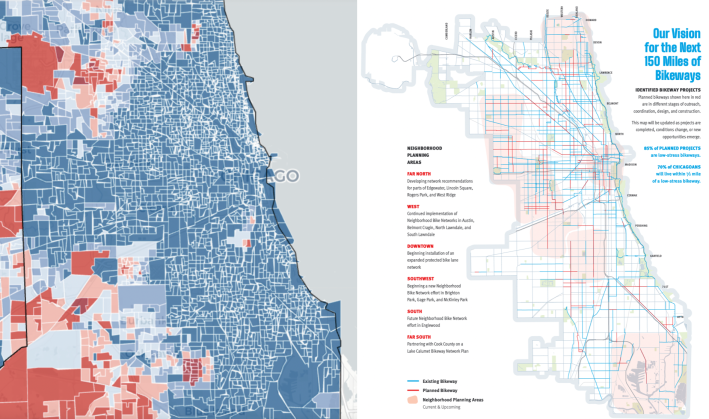
DSA Caucus Members (rose-and-handshake logo icons): Like alders in the Black Caucus, City Council reps who are members of the Democratic Socialists of America and its Council caucus often advocate for racial and economic justice issues. (There is a bit of overlap between the two groups since Ald. Jeannette Taylor [20th] is in both camps.) However, all six current DSA alders – plus ordinance co-sponsor Ald. Andre Vasquez (40th), who was previously a member – supported the legislation introduced by Ald. La Spata, a DSA member.
Question mark: Downtown Ald. Brendan Reilly (42nd), who's been pretty good about livable streets issues in recent years, did not vote on the ordinance.
So that's the breakdown of who was for and against the ordinance, and some stated or possible reasons why. On the bright side, it appeared that a few of these Council Members who ultimately voted no were on the fence about this matter. So perhaps they can eventually be convinced to support the legislation, and the safer speed limit will finally pass.

Did you appreciate this post? Please consider making a tax-deductible donation, to help keep Streetsblog Chicago's sustainable transportation news and advocacy articles paywall-free.

